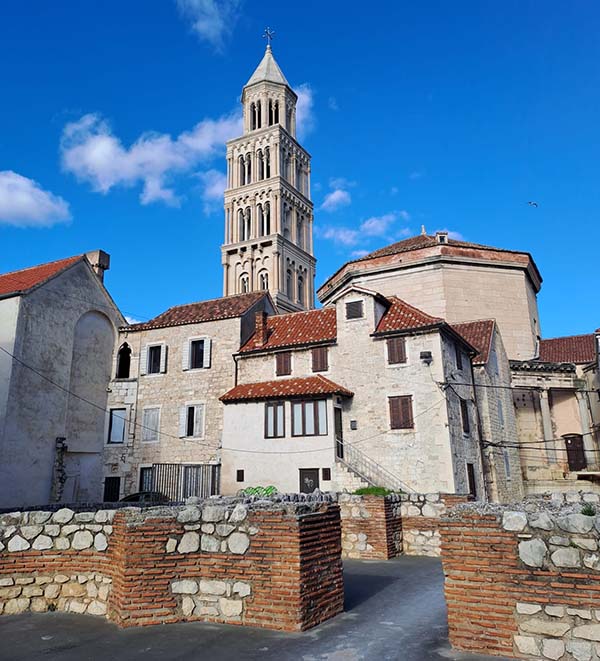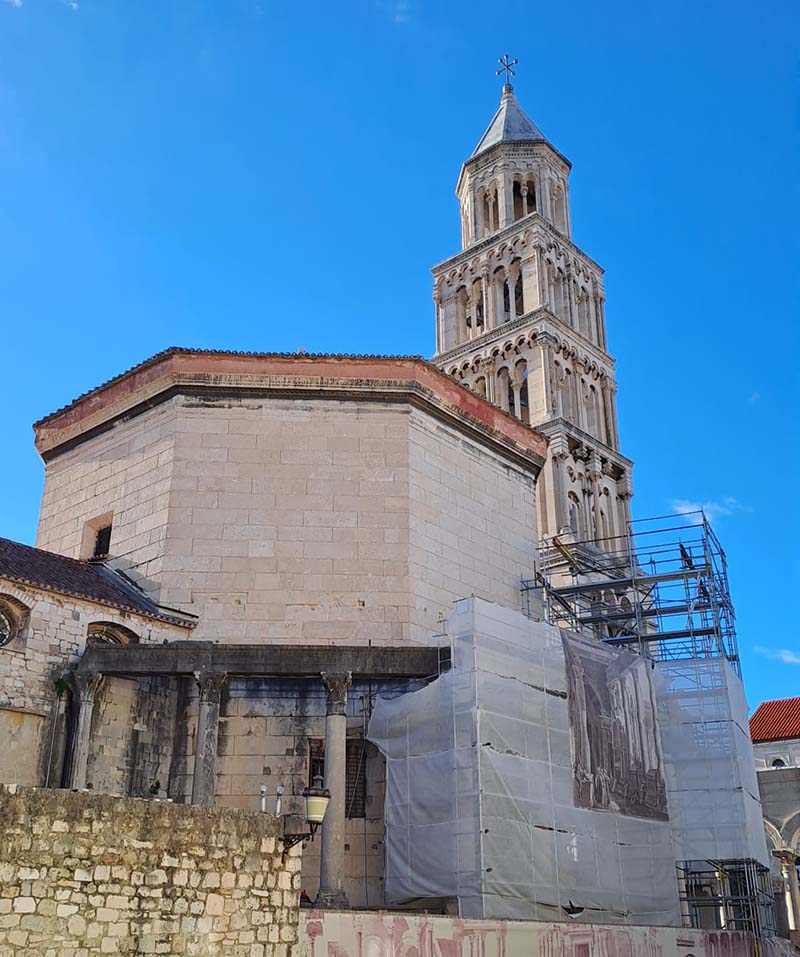The Cathedral of St. Domnius (or Sveti Duje, as it is known in Split) is one of Split’s most iconic and important landmarks. As a functioning cathedral with regular masses, it still serves as the center of the city’s spiritual life. The bell tower of the cathedral is the tallest in Dalmatia and has, for centuries, defined the skyline of the old town.

Originally, the cathedral building was constructed to be the tomb of Emperor Diocletian. It was designed as an octagon, surrounded by a ring of 24 columns. Inside the building, the circular layout was broken up with niches where statues of the emperor likely stood. The ceiling of the cathedral is itself a masterpiece, with bricks laid out in a fan pattern. Emperor Diocletian was buried there in 316 AD until sometime during the 7th century when his tomb was desecrated. As an enemy of Christians and one of the worst persecutors of Christianity among all Roman Emperors, Diocletian’s reputation suffered after Christianity became the dominant religion in Europe. When the first Christian settlers came to the Palace, they deliberately chose the emperor’s tomb as the location for their new cathedral.
Among the many victims of the emperor’s persecutions was the bishop of Salona. At that time, the city of Salona, believed by many to be the birthplace of Emperor Diocletian, was the capital of the Roman province of Dalmatia and a rich merchant town. When the bishop Dominius refused to give up Christianity, he was publicly executed in the gladiator arena of Salona and later proclaimed a Saint martyr.

In the 7th century, Salona fell to invading Slavic tribes and was never rebuilt. The people who fled Salona took refuge between the walls of the emperor’s palace, and they later brought back the body of their cherished Saint Domnius from the ruins of Salona. He was named the patron saint of the new city, along with another one of the emperor’s victims, Saint Anastasius.
In an ironic twist, it is now the saint who is buried in the old emperor’s tomb. In the 12th century, the construction of the bell tower began. It reached its full height of 57 meters only three centuries later, making it one of the slowest-built buildings in Split (as a comparison, the whole palace was built in just 10 years!). The bell tower combines three essential architectural styles of the Middle Ages in Dalmatia, mostly built in the Romanesque style, with some parts in Gothic and Renaissance style. In the late 19th century, the bell tower underwent an almost complete renovation, removing many original decorations and greatly unifying its style.

The cathedral building has also changed from its original design. Most of the old Roman decorations were removed, along with the emperor’s sarcophagus and body. Altars of the patron saints, church benches, the pulpit, and Christian paintings and statues were erected in their place. In the 17th century, the eastern part of the building was torn down to expand the cathedral with a choir, forever changing its original octagonal shape. Still, in the choir of the cathedral today is placed one of the finest examples of Romanesque woodcarving artwork. The long benches lining each side of the choir were made by a local master sculptor, Andrija Buvina. He also produced the entrance gates of the Cathedral, a woodcarving masterpiece where the life of Jesus Christ is depicted on 28 panels.
When visiting Split, besides the cathedral building, it is worth visiting the crypt of St. Lucy located underneath the cathedral, as well as the cathedral treasury and baptistery. Not to be missed is the bell tower, offering one of the best panoramic views of the city from the top.

